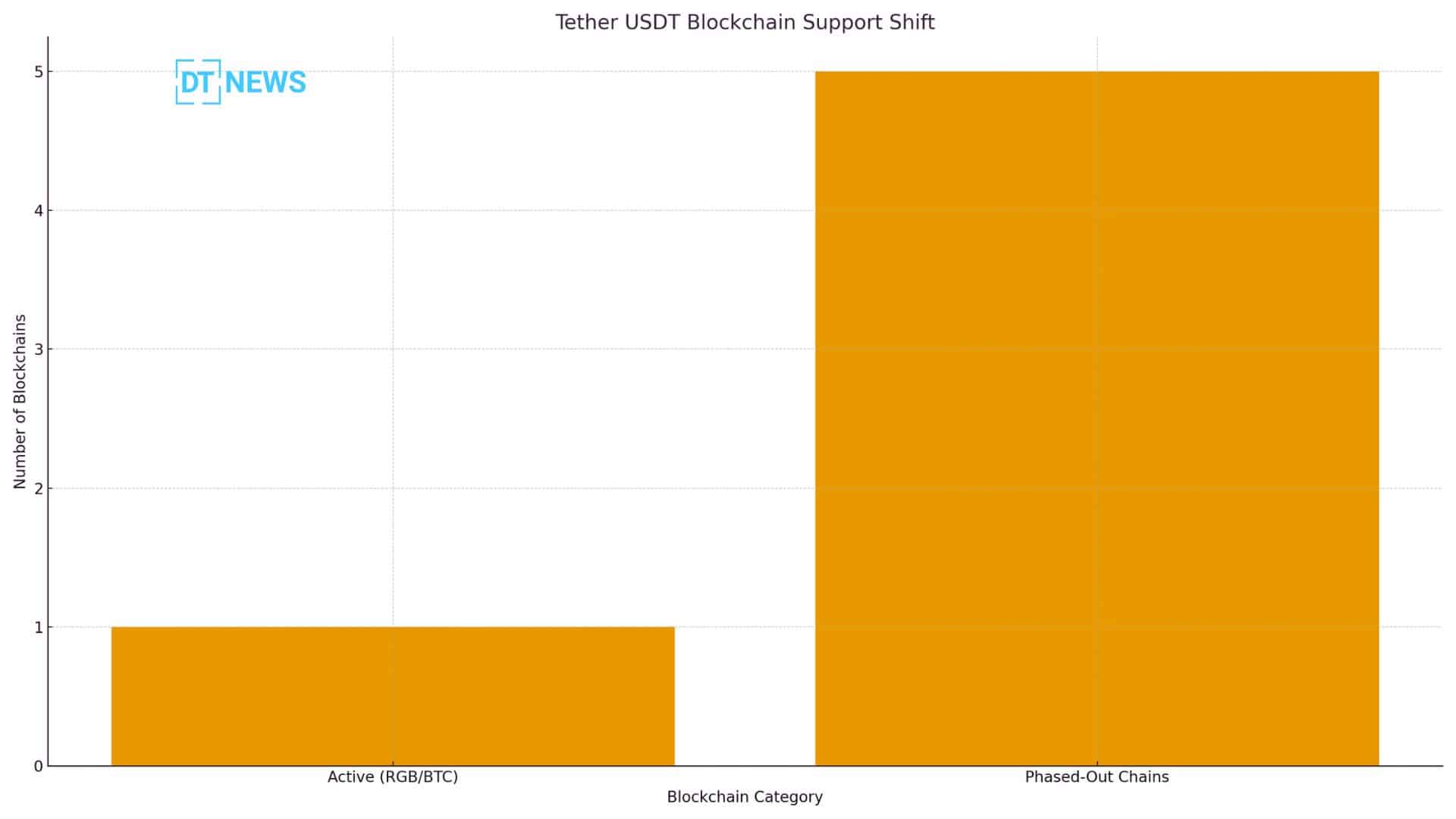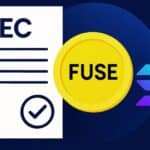This article was first published on Deythere.
Tether USDT is making headlines by launching directly on Bitcoin using the RGB protocol. According to the source, Tether announced on August 28, 2025, that it will issue USD₮ on RGB, a next‑generation protocol built for tokenized assets over Bitcoin.
This is a big moment. Tether says that with RGB, stablecoin transfers become private, fast, and scalable, and that users will be able to hold USDT and BTC in the same wallet.
Why This Move Matters
RGB Makes Bitcoin More Than Digital Gold
RGB version 0.11.1 recently went live on Bitcoin’s mainnet. The protocol uses client‑side validation. That means token data stays off‑chain, while proof of ownership links back to Bitcoin. That design keeps Bitcoin’s base layer lean and private.
USDT in Bitcoin Wallets
With Tether USDT on RGB, users can store and move their stablecoin inside the same wallet they use for BTC. Tether says this supports both online and offline transactions.
Lightning Compatibility
Since RGB works with Bitcoin’s Lightning Network, sending USDT could be very fast and low‑cost. Tether highlights this as a way to encourage lightweight payments and micro‑transactions.
More Private Transactions
RGB’s client‑side model means transaction details and balances do not need to be publicly visible on the Bitcoin blockchain. Tether says that preserves user privacy while keeping security strong.
Strategic Shift by Tether
At the same time, Tether plans to end USDT issuance on five now obsolete blockchains: Omni Layer, Bitcoin Cash SLP, Kusama, Block.one’s EOS and Algorand. By September 1, 2025, it will stop issuing and redeeming USDT on these chains. In this turn, Tether’s strategy shows a clear commitment to always active chains and withstanding construction..
Tether’s market strength adds weight to this move. Its USDT supply sits around $167 billion, making it one of the most liquid stablecoins globally.

Potential Challenges
Despite appearing to be a strong method, several challenges could hinder its acceptance.
- Wallet Support: The USDT will only be available in a few wallets, where it is already available alongside BTC and that support RGB.
- Regulation Risk: The authorities are usually regulatory for digital currencies and stablecoins.
- Bridge Complexity: Transferring USDT from other chains into RGB may require bridges for users.
- Education Gap: New users may not understand RGB or how client‑side validation works.
What This Means for Crypto Users
- Payments & Remittances: People might start using USDT on Bitcoin for cross-border payments with lower fees.
- Offline Use: Because RGB supports offline transactions, this could work in regions with weak internet.
- DeFi Potential: With token issuance on Bitcoin, RGB could enable DeFi-style products directly on BTC.
- Privacy Use Cases: Individuals who care about privacy may prefer USDT via RGB over public blockchains.
Conclusion
Tether USDT’s move to Bitcoin via RGB could change how people use stablecoins. This gives USDT a “native” home on Bitcoin, letting users keep both BTC and USD₮ in one wallet. Speed, privacy, scalability, and more are already big pluses.
If users and developers adopt this technology, then it can be a turning point. Stablecoins might become more tightly integrated into the future of Bitcoin. Nevertheless, wallet support and clear regulation are necessary for that to happen.
Glossary of Key Terms
- RGB Protocol: A protocol for issuing tokens on Bitcoin using client‑side validation.
- Client‑Side Validation: Validation done by the user’s device, not the blockchain, keeping data private.
Lightning Network: A layer 2 network for fast and cheap Bitcoin transactions
Stablecoin is a cryptocurrency pegged to a stable asset like USD that reduces some of the price variation.
On‑Chain/Off‑Chain: Recorded directly in a blockchain means on‑chain while something that is off‑chain probably refers to a database.
FAQs About Tether USDT
1. When will Tether USDT on RGB be available?
Tether announced the plan on August 28, 2025, but it has not given an exact public date for wallet rollouts.
2. Can I move USDT from Ethereum or Tron into RGB‑based USDT?
Not directly yet. Bridging tools may be needed, and Tether and other developers need to build them out.
3. Will sending USDT on RGB cost a lot?
It should be cheaper than many on‑chain methods, especially with Lightning compatibility.
4. Is my transaction history private with USDT on RGB?
Yes. Since data is validated on your own device, detailed balance and flow information does not broadcast to the Bitcoin blockchain.
5. Why is Tether stopping USDT on some blockchains?
Tether is shifting focus from lower‑usage chains (like Omni Layer, Kusama, EOS) to more active, scalable ones, including Bitcoin via RGB.



















































































































